
Did you know there are nearly 15 million sales professionals employed in the U.S. alone?
My first thought? That’s a lot of resumes.
Now would be a good time to introduce myself. My name’s Allie, and I’m a recruiter at Drift ⚡
Every day I look at a very small chunk of those 15 million sales resumes. It got me thinking about how sales professionals are essentially selling themselves to prospective employers.
But if you’re in sales, you don’t need me to tell you that. You know first-hand how competitive the industry can be when you’re trying to land your dream job.
That’s why it’s crucial to have a sales resume that stands out. One that’s not just professional, but that highlights your biggest achievements as a sales rep.
Have you smashed a quota? Include it.
Boosted a company’s sales? Highlight it.
Increased customer satisfaction? Mention it.
Writing a sales resume that gets you hired goes beyond downloading a template. In this piece, I’m going to give you my best tips on:
- How to write a sales resume
- How to add sales numbers to your resume
- Three ways to stand out in a sales resume
Let’s dive in.
How To Write A Sales Resume
Think about writing your sales resume like prepping an elevator pitch.
It needs to sell your skills in a way that piques the interest of the hiring manager, without taking too long to read.
That being said, it still needs to have the typical core ingredients of any resume:
- Company name, location and how long you worked there
- A small description of the company
- Your job title/responsibilities
- Major accomplishments in your role
However, listing your sales experience and skills traditionally won’t cut it with most sales hiring managers. Instead, you need to break up your resume into sections to highlight your best achievements.
Step #1: Think About Your Best Sales Achievements
In your sales roles, what have you done that’s really moved the needle at a company?
You might be a good team player and engaging with customers, which is great. But sales managers want to hire people who will also get results. Think about including specifics like:
- Accomplishments that are relevant to the job you’re applying for
- Specific numbers/percentages of how you exceeded quota/increased sales
- In-depth details about increasing customer numbers, profit margins, etc
Once you’ve brainstormed the highlights of your career, it’s essential to pad out the rest of the resume with your other skills like:
- Time management
- Attention to detail
- Retention and acquisition stats
- Written and verbal communication
- Team skills
- Self-motivation
- Organizational skills
Step #2: Create A Header That Hooks Them In
The header on your sales resume is the first part that the hiring manager will read – make it count.
Don’t just write “Sales professional with SaaS experience.” Include a glimpse of any achievements, awards, and experience to make yourself stand out:
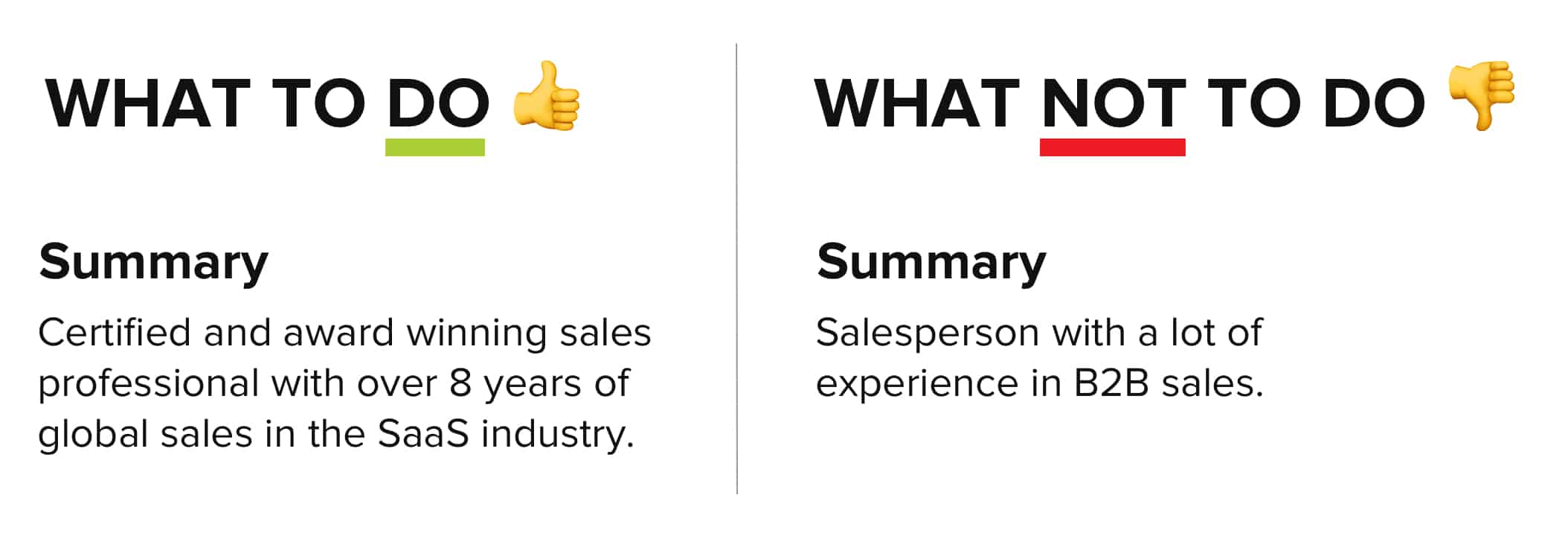
Step #3: Build Your Resume In Reverse-Chronological Order
When you’re building your sales resume, do it in reverse chronological order.
The highlights you brainstormed in Step #1 should sit amongst the company, job title, and dates of employment of when they were achieved, like this:
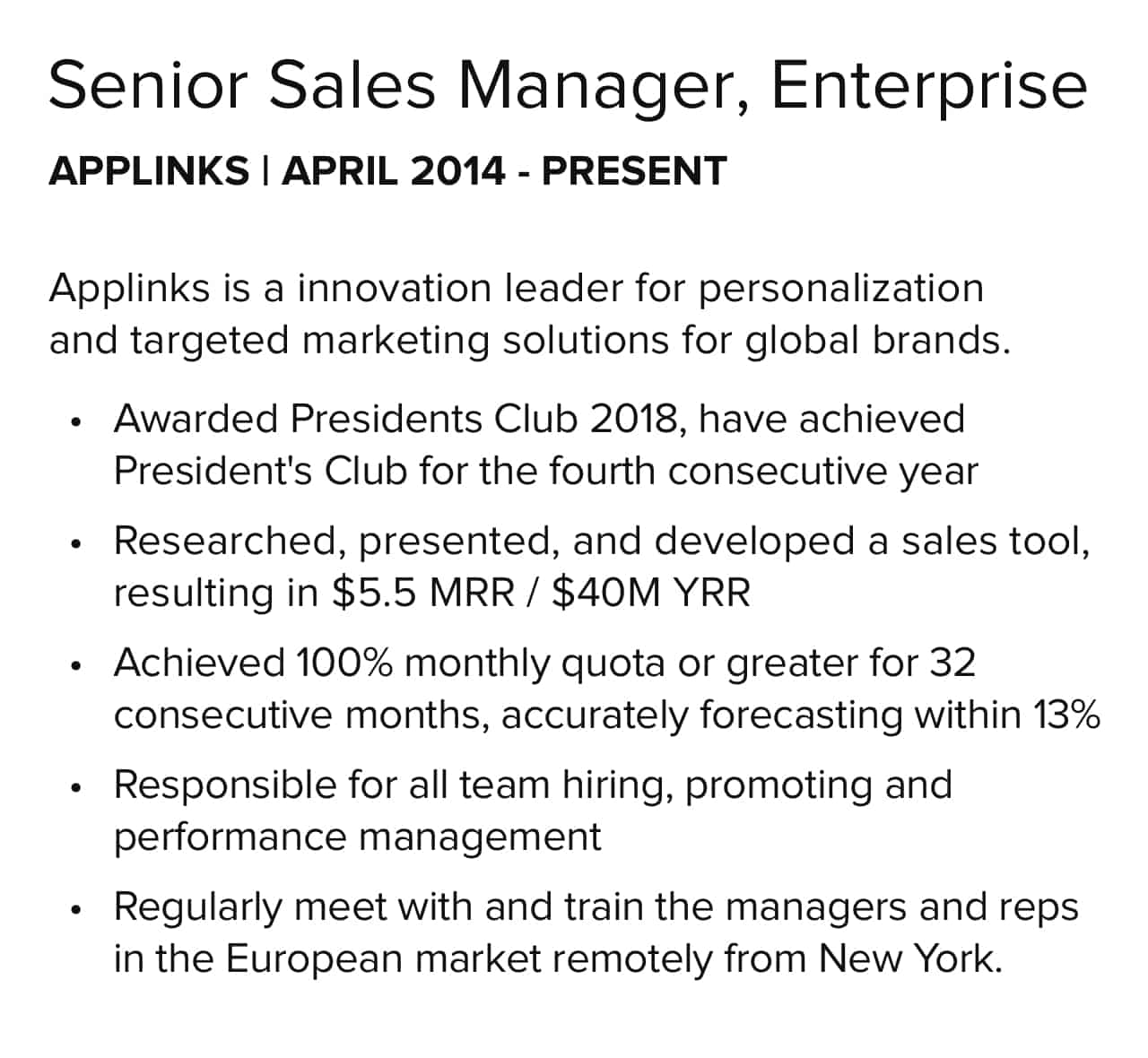
Make sure you include any keywords that are used in the ad for the job you’re applying for. It helps guide recruiters and show them you’re a good fit if you can align with what they’ve asked for in the job description.
Pro-tip: Try bolding any keywords, numbers, or statistics from your brainstormed highlights in Step #1. It will help them stand out from the rest of the text on the resume.
Step #4: Optimize It For An ATS
A lot of employers, especially those who hire at scale, use systems to manage all of the candidate applications, called Applicant Tracking Systems (ATS). Within the ATS, recruiters can use automated scanning programs to weed out unqualified applicants.
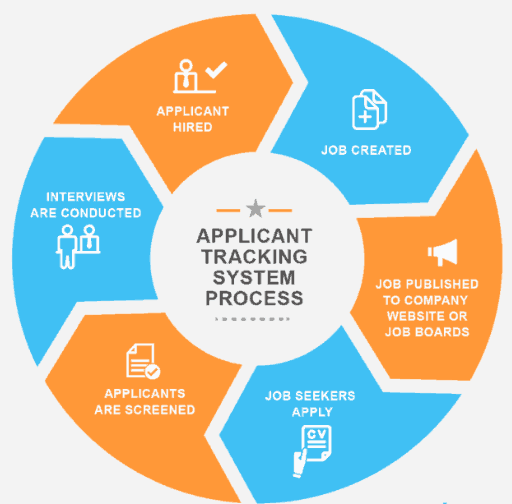
Image Source
An ATS can rank resumes on specific elements based on a job description. It picks out top candidates who match with what a company is looking for, so hiring managers don’t have to sift through resumes of candidates they would never hire. To ensure your resume gets in front of the right people, it’s better to use a basic font such as Arial or Times New Roman for your resume so the ATS is able to read it.
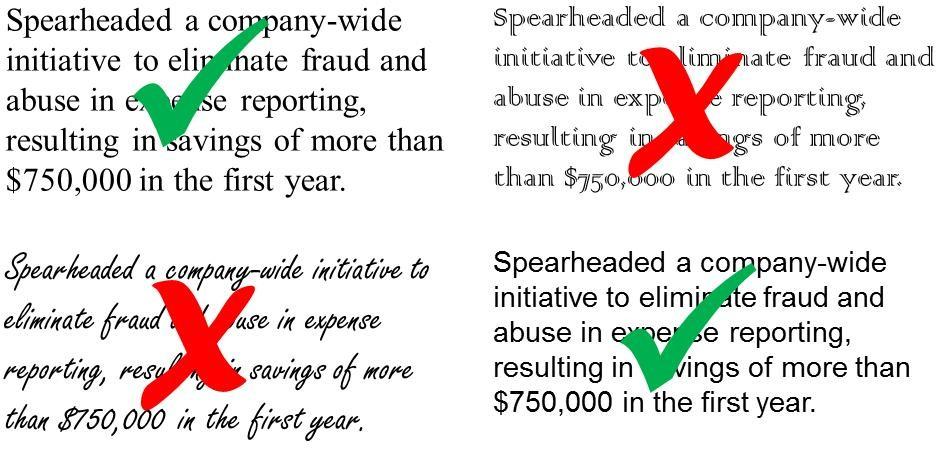
Image Source
Pro-Tip: Don’t Neglect Your LinkedIn Resume
Make sure you feed all of this effort into your LinkedIn profile!
After all, 87% of recruiters use it to screen potential employees, and the companies you’ll be selling to in the future will also seek it out.
A basic checklist of what your LinkedIn resume should include:
- A professional headshot (no selfies or cropped out party photos) and a background image
- Your past work experience and endorsements from former colleagues
- A condensed version of your elevator pitch that highlights your best work
Here’s an example from Drift’s Vice President of Enterprise Sales, Jill Chiara:

Professional headshot ✅
Background image ✅
Next, Jill nails her “About” section with a clear, concise paragraph backed up with a bulleted list.
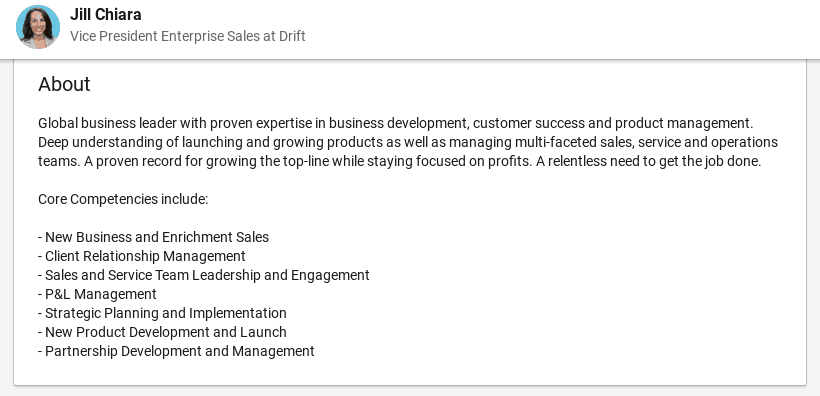
And then, her LinkedIn profile is rounded off by glowing recommendations from former colleagues.
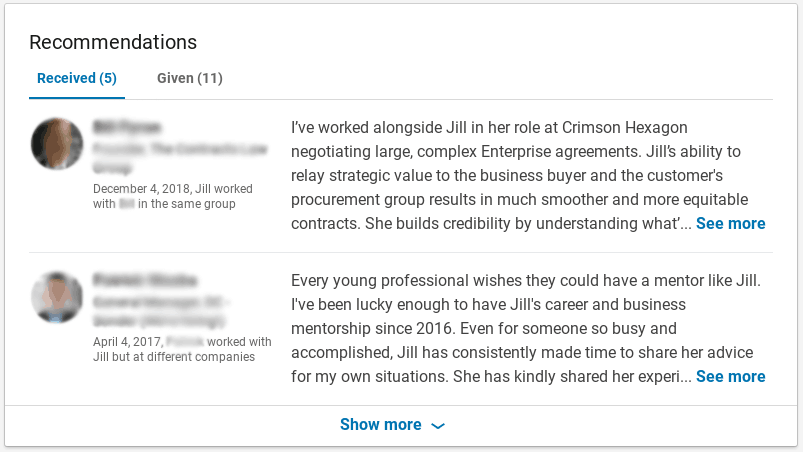
Don’t neglect your LinkedIn resume. Remember, it’s available to any recruiter or prospect – 24/7.
How To Add Sales Numbers To Your Resume
Adding real numbers and percentages to back-up your accomplishments on your resume is essential.
To start deciphering what numbers you can use on your resume, reflect on past efforts like profits, prospects and customers, and ask yourself:
- How much revenue did I bring in per month?
- What was my quota? Did I exceed it? How often?
- Did my efforts contribute to customer retention?
- Was I above average on any figures such as outreach and prospecting?
Then, use your answers to build examples for your resume. Executive Resume Writer at Dream Life Team, Rebecca Bosl, says weak examples illustrate more of what you did, but a strong example shows how your actions impacted the company you were working for.
Weak: Conducted cold calls, sent cold emails and increased sales
Better: Increased sales 40%, from $XXX to $XXX, through business development activities and prospecting through XXX
There are three ways you can build sales numbers into your resume:
Customer satisfaction increase:
“Combined efforts with customer service team and customer nurturing program increased customer satisfaction by 10% annually.”
Meeting your sales targets:
“Improved and maintained profit objectives that exceeded $XXX in quarterly sales within my territory.”
Smashing your sales targets:
“Analyzed and nurtured the specific needs of prospects to develop data-driven, individualized pitches that increased company profits by X% over X years.”
3 Things To Remember When Writing A Sales Resume
1. Tailor Your Resume To The Job
You wouldn’t recycle the same pitch for your prospects, would you?
So, you should never serve up the same resume to the jobs you’re applying for either.
Recruiters write job descriptions for a reason. For example, if they want someone with X years of sales experience with a track record of client retention, find out a way for your resume to match these expectations.
Always assume that the hiring manager is utilizing APS and use any specific keywords from the job description in your resume.
2. Sprinkle Action Verbs Throughout Your Resume
Using action verbs to describe your achievements can bring them to life.
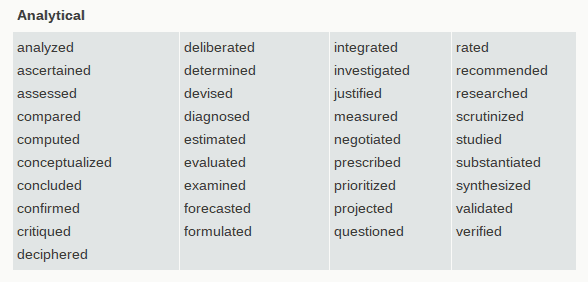
Example of analytical action verbs from Michigan State University. Image Source
You can use action verbs to frame up your accomplishments, so they sound like:
“Provided outstanding customer service while maximizing sales and serving as a positive role model for team members in the consumer electronics business in retail.”
Or
“Increased sales using strategic planning and forward-thinking prospecting techniques to exceed customer experience and meet customer needs.”
3. Don’t Forget To Include Your Soft Skills
As crucial as hitting targets and increasing revenue are, hiring managers still need to know you’ll carry a conversation and fit in with the rest of the sales team.
Don’t be afraid to include your “soft skills” like communication and personality perks on your resume.

An example of how to show off your soft and hard skills in a simple way to a hiring manager. Image Source
Now It’s Your Turn
Building a sales resume that helps you stand out from the crowd isn’t rocket science. All it takes some self-reflection.
When you’re putting your sales resume together, it’s not the time to downplay your accomplishments. Don’t be afraid to highlight your most significant career highlights like exceeding quotas quarter over quarter and retaining customers.
Because we recruiters get busy…remember those 15 million resumes I mentioned earlier? A strong resume that tells us exactly why we should hire you will ensure we bump your name to the top of the list ?






